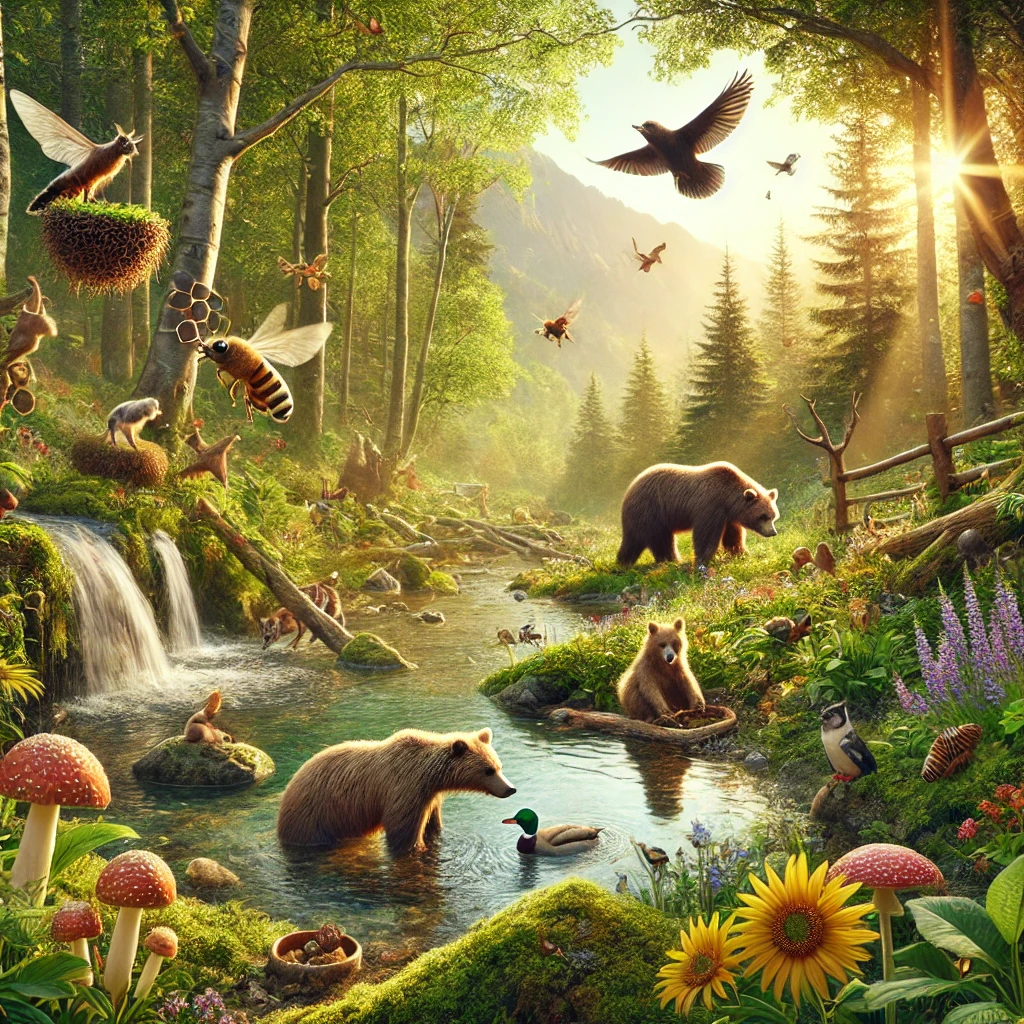Wildlife and nature have been sources of inspiration for humans for centuries. As we face environmental challenges such as climate change, pollution, and resource depletion, looking to the natural world can teach us valuable eco-friendly lessons from nature on how to live more sustainably. Wildlife, with its balance and harmony in ecosystems, provides great examples of eco-friendly living that we can apply to our own lives.
In this post, we’ll explore how wildlife can inspire us to adopt more eco-friendly habits and make better choices for the planet.
1. Efficient Use of Resources: Learn from Animals’ Minimalism
Wildlife naturally uses resources efficiently. Animals don’t take more than they need, and everything in nature has a purpose. For example, bees collect just enough nectar to produce honey, and birds use only as many twigs as necessary to build their nests.
How we can apply this:
- Adopt a minimalist lifestyle by consuming only what you need and avoiding waste. This can include using fewer products, minimizing single-use plastics, and buying items with longevity.
- Practice zero-waste living, where possible, by repurposing items and reducing what you throw away. Follow the principles of “reduce, reuse, recycle” to mimic the efficiency found in nature.
Inspiration: Just like a bird builds a nest from found materials, we can upcycle and repurpose materials to reduce waste and live more sustainably.
2. Natural Cycles: The Importance of Recycling in Nature
In nature, nothing goes to waste. Organic material is broken down by decomposers like fungi, bacteria, and insects, returning nutrients to the soil to nourish new growth. This cyclical process is essential for maintaining healthy ecosystems.
How we can apply this:
- Compost organic waste at home to turn food scraps and yard waste into nutrient-rich compost, reducing landfill waste and supporting soil health.
- Support recycling programs and ensure that materials like paper, plastic, and metal are recycled and reused, minimizing the need for new resources.
Inspiration: Just as forests recycle nutrients from fallen leaves and decaying matter, we can adopt a circular mindset to ensure that resources are reused and not wasted.
3. Energy Conservation: Animals’ Efficient Energy Use
Wildlife conserves energy instinctively. Animals like bears hibernate during the winter to save energy when food is scarce, and birds migrate to warmer regions to optimize their resources. These behaviors show us how important it is to use energy wisely.
How we can apply this:
- Conserve energy at home by using energy-efficient appliances, turning off lights when not needed, and unplugging electronics when not in use.
- Opt for renewable energy sources such as solar or wind power to reduce your carbon footprint and rely less on non-renewable resources.
Inspiration: Just as animals adapt their behavior to conserve energy, we can be more mindful of our energy consumption, using only what we need and switching to cleaner energy sources.
4. Sustainable Building: Nature’s Eco-Friendly Architecture
From beavers building dams to birds constructing nests, wildlife shows us the benefits of sustainable architecture. These natural structures are built using locally sourced, sustainable materials that blend seamlessly into the environment.
How we can apply this:
- Design and build eco-friendly homes by using sustainable materials like reclaimed wood, recycled metal, or bamboo. Green building techniques, like using natural insulation and solar panels, reduce environmental impact.
- Incorporate nature into design by creating homes and spaces that coexist with local ecosystems. Add green roofs, vertical gardens, or natural ventilation to reduce the need for artificial energy.
Inspiration: By mimicking the biomimicry principles found in nature, we can create sustainable architecture that benefits both humans and the environment.
5. Symbiotic Relationships: Coexisting with Nature
Wildlife thrives on symbiotic relationships, where different species work together for mutual benefit. For example, bees pollinate flowers, and in return, they get nectar. Similarly, certain fish clean parasites from larger fish in exchange for protection.
How we can apply this:
- Foster symbiotic relationships by supporting sustainable agriculture practices like organic farming and permaculture. These methods promote biodiversity and soil health, benefiting both humans and the environment.
- Support pollinator species by planting pollinator-friendly flowers and avoiding harmful pesticides, helping bees and butterflies thrive while contributing to a healthier ecosystem.
Inspiration: Just as animals rely on mutual cooperation, we can work with nature to create sustainable practices that benefit both human society and the natural world.
Conclusion: Wildlife as a Guide for Sustainable Living
Wildlife offers countless lessons on how to live in harmony with the planet. By observing and learning from nature, we can adopt eco-friendly habits that conserve resources, reduce waste, and protect the environment. From conserving energy like a hibernating bear to recycling nutrients like a forest floor, the natural world provides a blueprint for sustainability.
By making small changes inspired by wildlife, we can help ensure a healthier, more sustainable future for generations to come.
FAQ
Q1: What lessons can we learn from wildlife about sustainability?
Wildlife teaches us the importance of resource efficiency, energy conservation, recycling, and building sustainably—all of which can inspire us to adopt eco-friendly habits.
Q2: How can we apply wildlife-inspired practices to everyday life?
We can conserve energy, reduce waste, use sustainable materials, and support biodiversity through practices like composting, energy-efficient living, and planting pollinator-friendly gardens.


3 thoughts on “How Wildlife Can Inspire Us to Live More Eco-Friendly: Lessons from Nature”